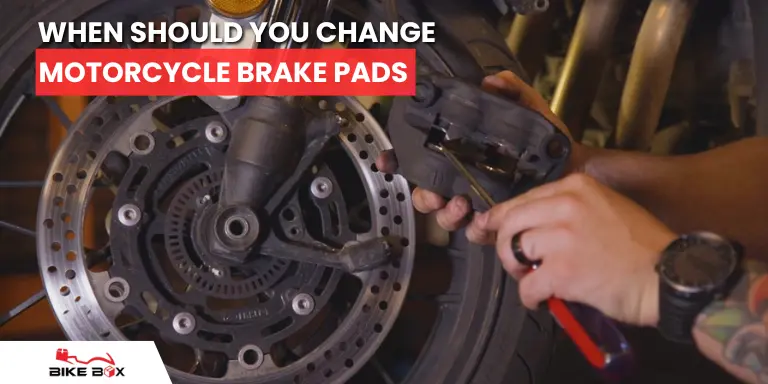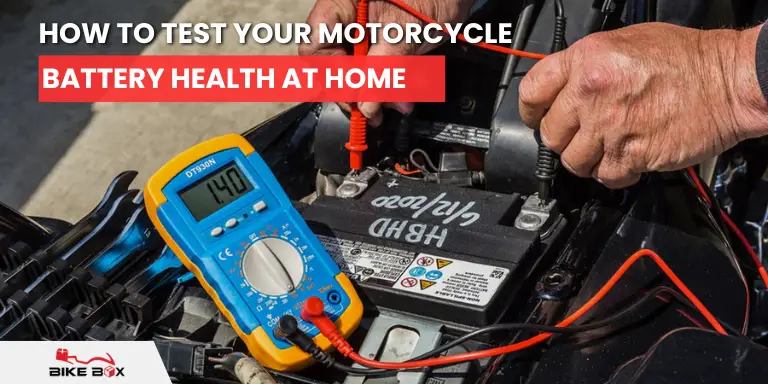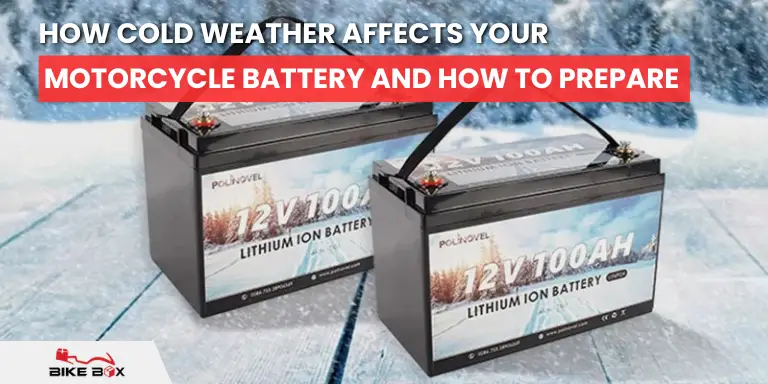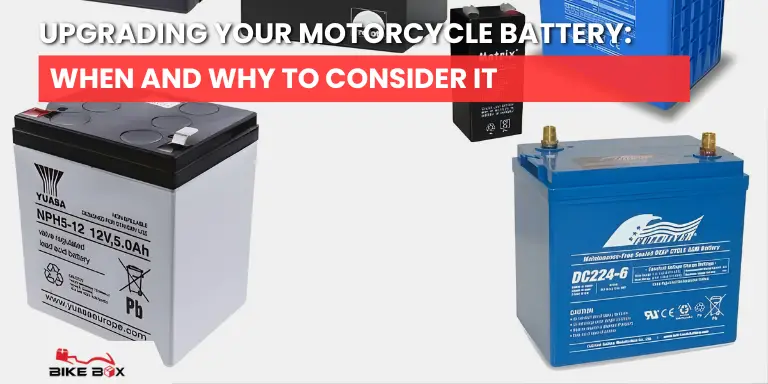You press the brake lever. It still stops, but not like before. It takes a bit longer. Feels softer. You ignore it, because the bike is still moving fine. Right? That “soft stop” is the early sign. It is the sign that your brake pads are thinning out. Keep pushing it, and next comes the squeal, the vibration, the burning smell. And then a time comes, when you apply brakes but they don’t work. Most of the time, it happens when you need them the most, at a signal, in traffic, or on a delivery run. It happens fast, and once it does, the damage has already been done.
Brake pads don’t just wear out. They expire. So, you need their replacements at regular intervals. Here is a guide on how often to replace motorcycle brake pads and the warning signs to watch.
How to Know It’s Time for New Brake Pads
Brake pads wear out over time. Riding style, road surfaces and pad material affect their life. Manufacturers give a mileage range but actual wear may be faster. Check pad thickness and listen for unusual noises. Here is a breakdown of What affects motorcycle brake pad life, how to spot warning signs and when to replace them.
Standard Mileage Guide
As a general guide for motorcycles in Saudi Arabia, you should change the brake pads of your motorcycle when your bike has covered distance in the following manner:
1. City Commuting:
Change your brake pads every 8k to 12k km. City rides mean frequent stops. Speeds are lower, but pads still wear over time. Check them regularly for safety.
2. Highway or Heavy Load Use:
Frequent high speed or heavy load braking wears pads faster. High speed braking generates more heat. Carrying passengers or heavy cargo increases pad wear. Check pads regularly for safety.
3. Brake Pad Replacement for Delivery and Off-Road Bikes
Delivery and Off-Road Bikes bikes face constant braking and heavy loads. Dust, sand and heat wear pads faster. Check them often for safety.
Why You Should Follow These Brake Pad Replacement Guidelines
Because brake pads do not wear the same way for every motorbike. Delivery riders in Riyadh brake constantly which wears pads faster. Riders on open highways use brakes less so their pads last longer. Heavy loads, heavy traffic, heat, dust and sand increase wear further. Regular inspections help spot worn pads early. If you are unsure where to buy high quality brake pads. Check out our guide on Where to Buy Genuine Motorcycle Brake Pads for Safety provides the best options for your bike.
Factors That Affect Motorcycle Brake Pad Wear
Several factors influence how quickly motorcycle brake pads wear out. It’s not just about mileage. It is also about what kind of rider you are and what your bike deals with daily.
1. Riding Style
Aggressive riders brake hard and often. This wears pads faster. Calm riders put less strain on brakes. Pads last longer with steady riding.
2. Road Conditions
Dusty, sandy or uneven roads wear pads quickly. In Saudi cities sand mixes with brake dust. This increases friction and reduces pad life.
3. Load and Weight
Heavy loads or passengers strain brakes. Pads wear faster under extra weight. Delivery bikes experience quicker pad wear than lighter bikes.
4. Brake Pad Material
Organic brake pads cost less. They wear out quickly. Sintered pads last longer. They handle heat very well. Semi-metallic pads give durability and reasonable cost.
5. Weather and Heat
High temperatures make brake systems hotter. Organic pads soften in heat, which reduces their lifespan. Hot weather accelerates wear and affects overall braking performance.
Signs It is Time to Replace Your Brake Pads
Your bike gives clear signs when brake pads are worn. Watch for these:
- Pad thickness below 2-3 mm
- High pitched squeaks, grinding or scraping sounds
- Increased stopping distance
- Vibration or unstable braking
- Soft and spongy brake lever feel
- Visible cracks, uneven wear or heat spots
- Brake fade after continuous braking
When you notice any of these signs – replace the pads immediately to stay safe and maintain consistent braking.
Why You Shouldn’t Delay Brake Pad Replacement
Waiting too long to replace worn pads can cause:
- Increased stopping distance
- Brake disc damage from metal-on-metal contact
- Brake failure in emergencies
- Higher repair costs for caliper or disc replacement
- Failed inspections and fines during Saudi road checks
Timely brake pad replacement is one of the simplest, most affordable ways to keep your motorcycle safe and roadworthy.
Get Original and Aftermarket Motorcycle Brake Pads with BikeBox Today!
BikeBox Motorcycles Trading LLC helps riders and fleet operators keep their bikes in top condition. They supply genuine and aftermarket brake pads for TVS HLX 150, Bajaj Pulsar 150, Boxer BM 150, Honda Unicorn 160 and Hero motorcycles. BikeBox provides same day bulk delivery and on the spot brake pad installation in Riyadh. Their fleet maintenance software tracks mileage, monitors pad condition, and sends replacement reminders. With BikeBox you get timely service, accurate maintenance records and quality spare parts. This ensures safe, reliable and consistent bike performance every ride.
FAQs
Do road conditions influence how fast brake pads wear out?
Yes. Road conditions affect brake pad wear. Rough or dusty roads increase friction. Sand and debris make pads wear faster. Smooth roads cause less wear.
Why is pad thickness important?
Pads under 2-3 mm reduce stopping power and damage rotors. Riding with them can compromise safety. Routine checks and early replacement give peace of mind.
What is brake pad glazing?
Glazing happens when pads overheat and form a shiny surface. It reduces friction. The bike takes longer to stop. Braking becomes less effective until the pads are replaced.
Are aftermarket brake pads reliable?
Many aftermarket pads work well if bought from trusted brands. Cheap or unbranded pads can reduce safety. They may also damage your rotors quickly.
Can dusty or dirty pads affect braking?
Dust and debris reduce friction. They also create noise and cause uneven wear. Cleaning pads and rotors regularly improves braking performance. It also extends pad life.




